Filter News
Area of Research
- (-) Neutron Science (43)
- Advanced Manufacturing (6)
- Biological Systems (4)
- Biology and Environment (11)
- Building Technologies (2)
- Clean Energy (89)
- Climate and Environmental Systems (3)
- Computational Biology (1)
- Data (1)
- Energy Frontier Research Centers (1)
- Fossil Energy (2)
- Fuel Cycle Science and Technology (1)
- Fusion Energy (1)
- Isotope Development and Production (1)
- Materials (73)
- National Security (2)
- Nuclear Science and Technology (20)
- Nuclear Systems Modeling, Simulation and Validation (1)
- Sensors and Controls (3)
- Supercomputing (40)
- Transportation Systems (1)
Media Contacts
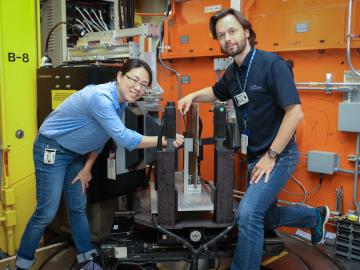
Massive offshore structures like oil rigs and wind turbines are designed to withstand the myriad punishments oceans tend to mete out. However, over time, just the saltwater itself can significantly decrease the durability of a structure’s welds.
That’s why professors Michael Jo...
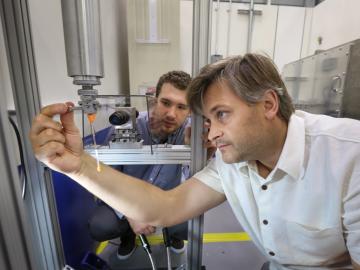
Scientists at the Department of Energy’s Oak Ridge National Laboratory have performed neutron structural analysis of a vitamin B6-dependent protein, potentially opening avenues for new antibiotics and drugs to battle diseases such as drug-resistant

After more than a year of operation at the Department of Energy’s (DOE’s) Oak Ridge National Laboratory (ORNL), the COHERENT experiment, using the world’s smallest neutrino detector, has found a big fingerprint of the elusive, electrically neutral particles that interact only weakly with matter.
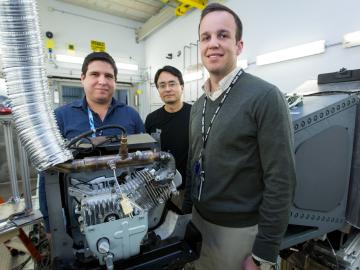
In a first-of-a-kind experiment, researchers used neutrons to investigate the performance of a new aluminum alloy in a gasoline-powered engine—while the engine was running.
A team from the Department of Energy’s Oak Ridge National Laboratory worked with industry partners to perfor...

Researchers used neutrons to probe a running engine at ORNL’s Spallation Neutron Source
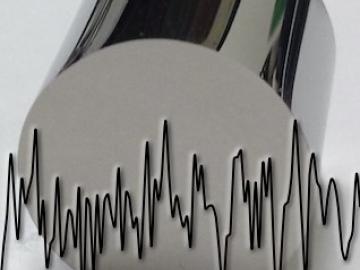
Using neutron scattering at Oak Ridge National Laboratory, a research team captured a time-sensitive phenomenon to prove that the entropy, or randomness, of atoms in a metallic glass when exposed to intense heat is linked to how atoms self-configure versus their vibration. The large neutron flux of ORNL’s Wide Angular Range Chopper Spectrometer continuously recorded changes in the sample’s vibrations as the temperature slowly increased—a technique not possible a decade ago.
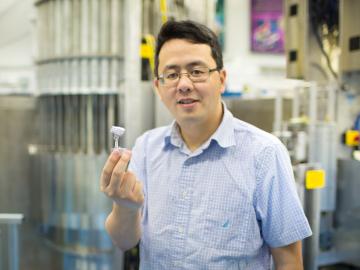
A team led by the Department of Energy’s Oak Ridge National Laboratory has used sophisticated neutron scattering techniques to detect an elusive quantum state known as the Higgs amplitude mode in a two-dimensional material.
The Higgs amplitude mode is a condensed ...
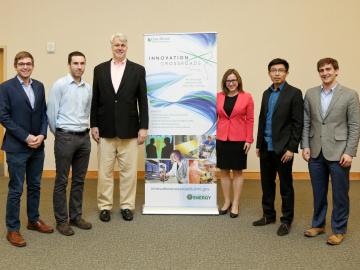
Oak Ridge National Laboratory today welcomed the first cohort of innovators to join Innovation Crossroads, the Southeast region's first entrepreneurial research and development program based at a U.S. Department of Energy national laboratory. Innovation Crossroads, ...
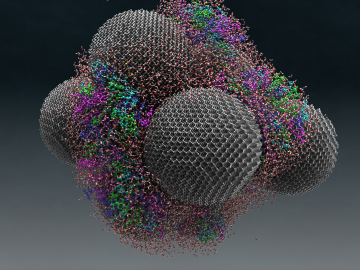
It’s not enough to design new drugs. For drugs to be effective, they have to be delivered safely and intact to affected areas of the body. And drug delivery, much like drug design, is an immensely complex task.
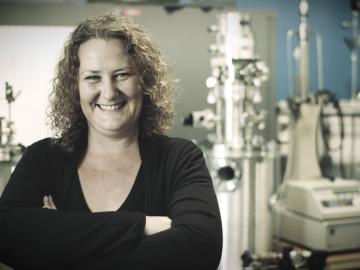
Scientific research can be vexing and tiring at times, but for Bianca Haberl, the euphoria of discovery is the ultimate reward.
In fact, Haberl can identify the specific instance, early in her career, when that excitement originated and guided her toward high pressure science. ...




